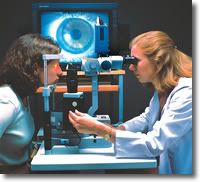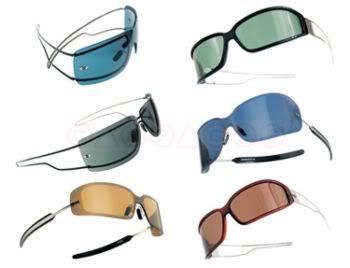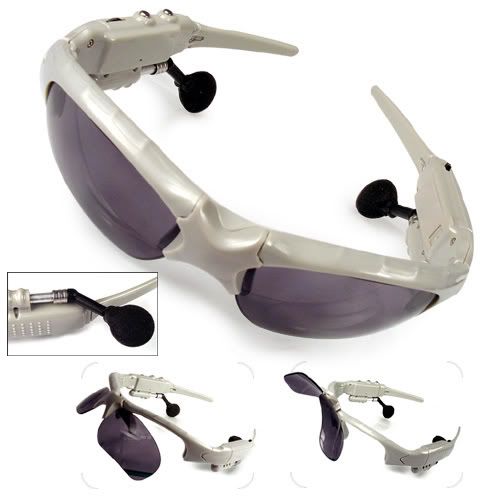The good news is that while refractive error is amongst the most common causes of blindness and visual impairment, it is also the easiest to ‘cure’. Refractive error can be simply diagnosed, measured and corrected, and the provision of spectacles is an extremely cost-effective intervention, providing immediate correction of the problem.
Throughout the world optometry has been the major provider of vision correction, but usually from a private practice setting. Public health optometry has not reached the communities that are in most need in any organized way. Despite this, on their own initiative, thousands of private optometrists worldwide have regularly visited communities in need to provide vision care and dispense spectacles. The opportunity now is for optometry to develop a concerted effort to create local capacity in these communities, in collaboration with its partners in Vision 2020, through service delivery, by creating human resources and by helping to develop the infrastructure needed, the three cornerstones of the Vision 2020 programme.
What is needed?
The way to eliminate uncorrected refractive error is through the development of all these aspects of a self-sustaining system, including personnel to provide eyecare services; and spectacles, to correct vision.

In most developed countries the optometrist to population ratio is approximately 1:10,000. However, in developing countries the ratio is 1:600,000, and much worse in many rural areas, up to millions of people per optometrist. This lack of practitioners is the main reason for high rates of vision problems due to uncorrected refractive error in developing countries. The ‘blindness’ rate in many developing countries, especially in Africa, is 7 times higher, at 1.4%, than in developed countries.
In order to deliver good quality eyecare to countries where the need is greatest, there needs to be a steady but substantial increase in the number of eyecare personnel trained in refraction and vision correction. The current desperate situation in many countries cannot wait for advanced optometry to develop but requires optometry to take a major role in training mid-level personnel in refractive care. Whether it is the world's newest country,
Many make the issue of refraction and vision correction too simple. Why not just use subjective trial and error? The main reason is that it does not work. Children accommodate, myopia is overcorrected, and hyperopia is undercorrected. The second reason is that both adults and children will not wear spectacles that hurt their ears, look strange or ‘strain their eyes’ – even if they are free. It is a waste of time, resources and money to do it the wrong way. Doing it the right way means an accurate refraction (by a refractionist using either a retinoscope or refractometer) and the correct ISO/ANSI standard spectacles that are comfortable and attractive. Affordable spectacles can be provided easily through mass-distribution of ‘ready-made’ spectacles and the establishment of low-cost local laboratories for ‘tailor-made’ spectacles.
International optometry and opticianry have important roles to play in this task. Traditionally, these groups have been primarily involved in the private sector, generally looking after wealthier people in the community. But progressive leadership in optometry sees an ever-increasing role in the development of training and continuing education programmes for all levels of available eye care personnel; in the establishment of infrastructure; in the development of effective models and programmes; in the delivery of eye care services to meet community needs, and in the funding needed for the provision of training and low cost spectacles.
Optometry as Part of the Eye care Team
In the first Planning Meeting of the Informal Group on Refractive Error, the participants endorsed ‘the inclusion of the correction of visually disabling refractive error as a component of the Global Initiative for the Elimination of Avoidable Blindness - Vision 2020: The Right to Sight’, and ‘emphasized the need to deliver refraction services as an integral part of general health care systems and comprehensive eye care’.
The need for glasses is also a public eye health opportunity not to be missed. Refractive care provides excellent access to the population for screening of more serious eye problems, such as cataract and diabetes. Primary care screening by optometrists and eye care workers, with optometrists taking care of the more immediate interventions required, and referral for more ‘complicated’ care, is ‘classical’ health care delivery.
One effective current model, developed by the LV Prasad Eye Institute in
- 1 ophthalmologist
- 4 optometrists
- 8 eye care workers
- 8 ophthalmic assistants
- 16 ophthalmic nurses.
The Role of Research
As the previous statistics show, there is a significant problem to be faced in addressing uncorrected refractive error. But understanding the scope of the problem, and most importantly, planning how to solve it, requires much more information than these simple numbers. Adequate prevalence data are necessary to determine the regions, population groups and age cohorts most in need of intervention, and, also, to provide the basis from which interventions in the future can be evaluated.
As part of the front line of the eyecare team, optometry has a role to play in research as diverse as the aetiology of the epidemic of myopia in
- Worldwide blindness and impaired vision – the burden and its effects
- Health care planning
- Service delivery
- Outcomes of intervention.
Refractive Error Study in Children
A series of studies around the world have begun to fill in the gaps in our knowledge of the burden of blindness and impaired vision in children caused by refractive error. The studies address the variation of refractive error with age, gender, race and geographic region, the extent to which it is being corrected, and how the prevalence is changing over time. The Refractive Error Studies in Children (RESC) have so far been conducted in
Self-Sustainability, Refractive Error and Optometry
Two other important contributions that optometry and the optical industry can make to the worldwide fight to eliminate avoidable blindness and impaired vision due to refractive error are:
- Developing the logistics and economics of self-sustaining eyecare at the community and institutional levels
- Mobilising worldwide resources to develop models and create the educational and delivery infrastructure for refractive and general vision care.
First, optometry and opticians need to pass on knowledge of the logistics, supply systems and economic management that is done so well in private practice, to public health programmes. Thus, spectacle supply can effectively fund more expensive or intensive needs such as low vision and cataract surgery. An important part of practical and cost-effective eye care systems to communities in need is the understanding that it does not make sense to bring 50% of the population that require refractive services into a hospital setting for refractive care. It makes much more sense to screen, refract and supply spectacles and vision care, including the detection and treatment of minor problems, and referral of those with more serious problems, at the community level. Optometry can make a major contribution in supporting eye care at this more convenient and cost-effective level.
Second, the global spectacle industry and optometrists and ophthalmologists who serve the private sector probably generate total revenues of over $100 billion. It would be a powerful statement of professional and corporate responsibility if 0.1% of this amount found its way back to help those most in need.




No comments:
Post a Comment